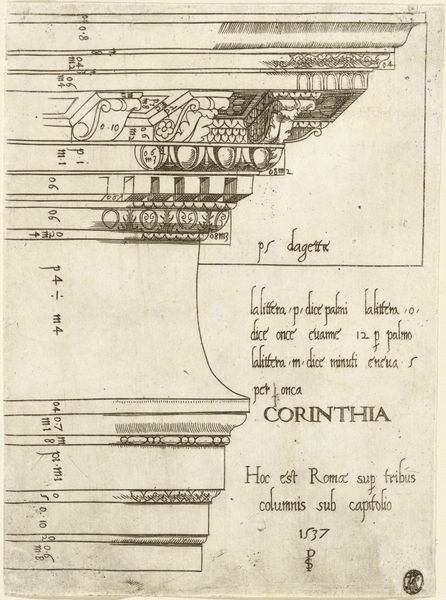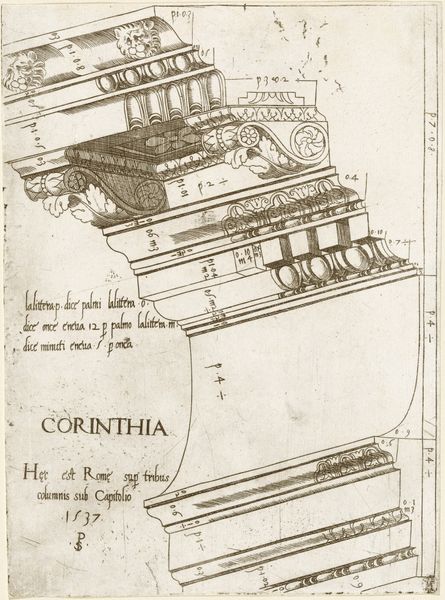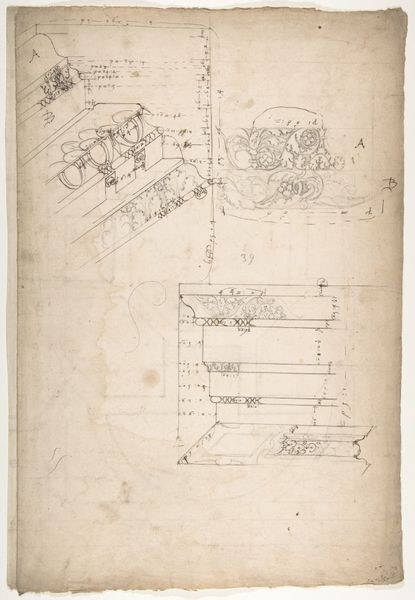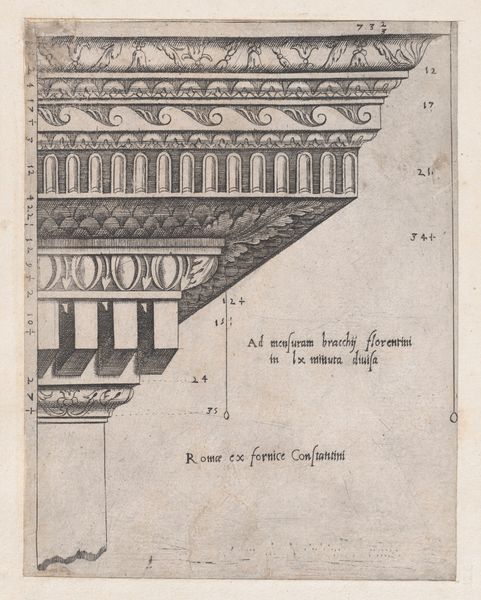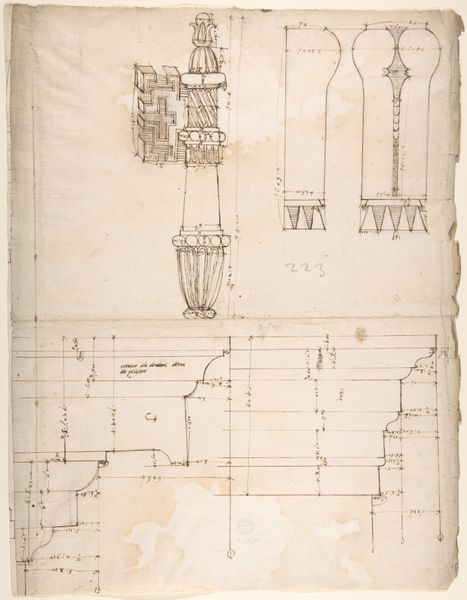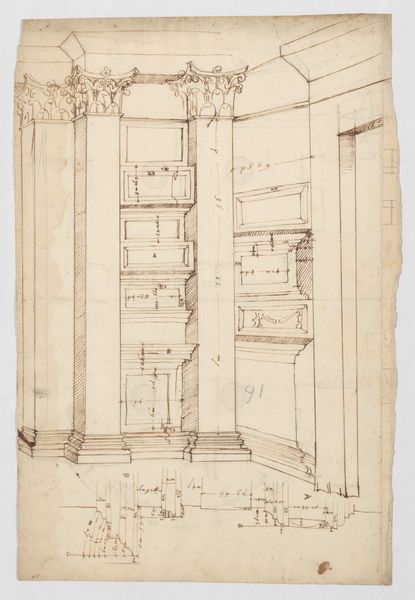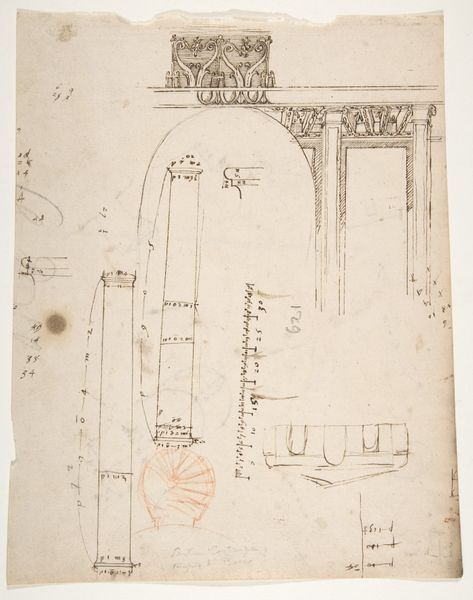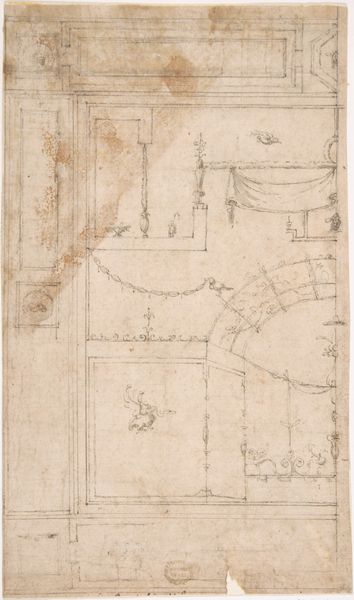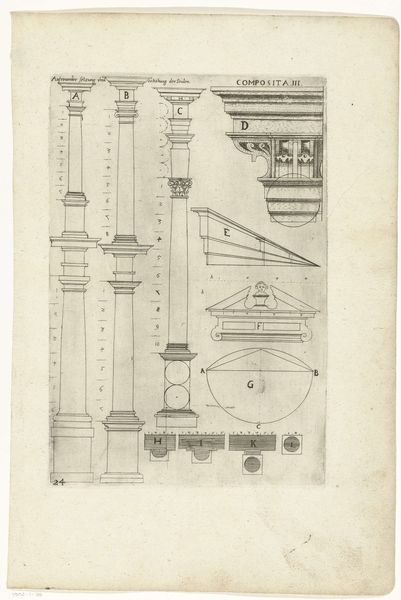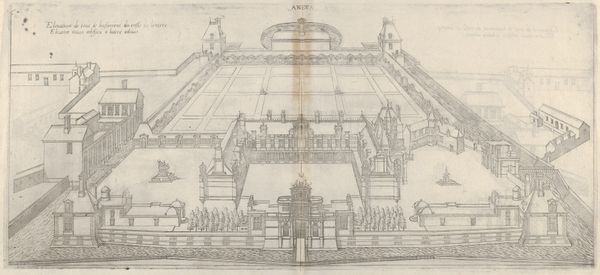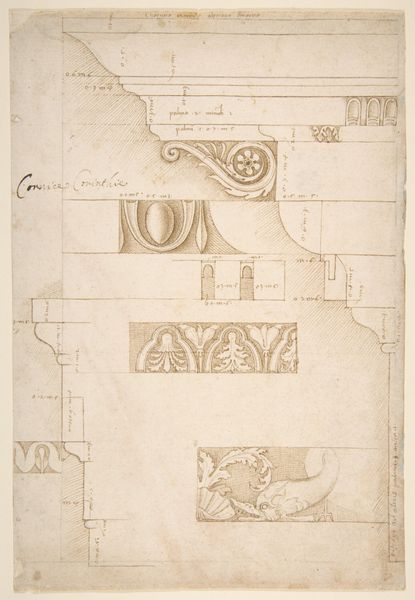
#
comic strip sketch
#
aged paper
# print
#
old engraving style
#
personal sketchbook
#
sketchwork
#
pen-ink sketch
#
pen work
#
sketchbook drawing
#
storyboard and sketchbook work
#
sketchbook art
Copyright: National Gallery of Art: CC0 1.0
This drawing of an entablature from the Basilica Ulpia in Rome, made in 1537 by Master PS, depicts the Corinthian order, adorned with acanthus leaves and intricate moldings. These elements are not merely decorative, but symbols deeply rooted in the collective memory of antiquity. The acanthus leaf, prominently displayed in the Corinthian capital, can be traced back to ancient Greek art, symbolizing endurance and rebirth. It reappears throughout history in varying forms, from Roman friezes to Renaissance architecture, each time carrying echoes of its original significance. The Corinthian order, developed in ancient Greece and refined by the Romans, speaks of aspiration, the pursuit of perfection, and perhaps even a longing for a lost golden age. These visual motifs, repeated and transformed across centuries, engage us on a subconscious level, evoking a sense of continuity and connection to the past. We witness the cyclical nature of cultural memory.
Comments
No comments
Be the first to comment and join the conversation on the ultimate creative platform.
